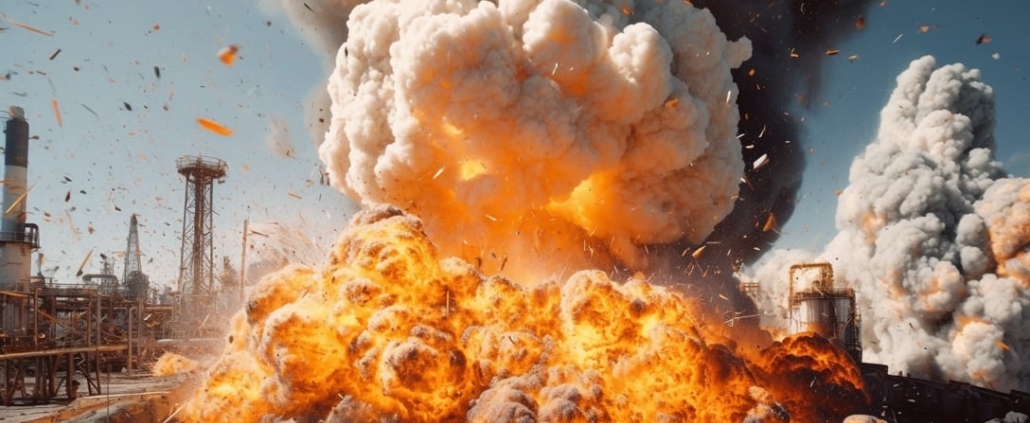Blast Protection System Considerations
It may seem unthinkable, but building owners and managers need to be prepared to protect their properties from a wide range of threats. In many cases, this means fortifying their buildings with systems designed to resist gunfire and forced entry attempts. This is often enough for most commercial buildings such as retail stores, gas stations and restaurants that are targeted frequently by thieves. Other properties, however, call for a heightened security solution.
High-risk properties such as banks, embassies and military installations may be targeted by those with more firepower than a small handgun. Whether the intent is large-scale robbery, ideologically motivated terrorism, or just a close proximity to an industrial facility with explosive materials, these threats are of a magnitude greater than those faced by the average commercial property. This is why it’s critical for facilities that face these elevated dangers to have robust blast protection to secure them against high-caliber gunfire as well as explosives. Designing a blast-resistant building means having the right protection in the right places, and it’s crucial for property owners to know what it takes.
Selecting Blast Protection Materials
Architects, designers and building owners have a number of options when it comes to fortifying their properties against the threat of explosives. These include security doors and windows that offer protection for frequently targeted properties. However, it’s critical to note that not every product offers blanket protection against every form of threat. Although a window or door may be rated as bullet-resistant, that does not necessarily mean it provides adequate protection against an explosion.
The most common standard for bullet-resistant glass in North America is UL 752, developed by Underwriters Laboratories. It ranges from Level 1, which stops up to three shots from a 9mm handgun, all the way up to Level 10, which means the product can resist a single shot from a high-powered .50 caliber rifle. For blast-resistant doors and windows, however, there are different standards. These products should be rated to meet or exceed the performance criteria outlined by the GSA Blast and/or DOD Forced Protection/Anti-Terrorism Criteria standards. When designing the protection systems for their properties, architects and building owners should make sure the products they choose are rated for these in addition to meeting the level of UL 752 protection they need based on the severity of threats they are likely to face.
As one of the leading providers of ballistic and blast protection trusted by property owners across multiple sectors, U.S. Bullet Proofing has the expertise and product selection to offer the highest levels of security. Our experts can help select the ideal materials and products to offer the most appropriate protection for all types of properties.
Innovative Protective Coatings and Blast-Resistant Glass
Our ballistic glass products are designed to provide exceptional protection against projectiles as well as explosions in many cases. The security they provide is due to their design, which utilizes the most advanced and effective forms of ballistic glazing available on the market.
The bullet- and blast-resistant glass we use in our products consists of several layers of polycarbonate sheets sandwiched between glass. The purpose of this design is to provide strong resistance to impacts from bullets as well as blunt force or blasts. Upon impact, a projectile is slowed down by resistance from the polycarbonate layer. This material absorbs some of the force, and each subsequent layer absorbs more until the projectile is ultimately stopped. The layered construction of the glazing also means a significant portion of glass fragments created during the impact are held in place, which prevents them from becoming dangerous projectiles themselves. By stopping the initial attack, these protective glass systems give the building’s occupants precious seconds to get to a safe location.
Risk Assessments and Safety Engineering
One of the most critical elements of safeguarding any property from the threat of explosions is conducting a thorough risk assessment and using the results to guide safety engineering efforts. A risk assessment is performed by evaluating the severity of threats the facility is believed to face. For example, courthouses would be much more likely to be targeted by improvised or homemade explosive devices than military facilities, which should be fortified against military-grade ordinance. Other crucial considerations include how close an assailant would be able to get to the building and what type of structural materials were used in the facility’s construction.
Based on the results, architects and designers conduct safety engineering to ensure the property will have the proper level of protection against the maximum expected threat. This includes structural design that prevents total collapse of the building as well as integrating any security products to provide the required level of protection.
Trust U.S. Bullet Proofing to Offer Superior Protection
Thanks to our extensive in-house knowledge and capabilities, U.S. Bullet Proofing is the supplier high-risk facilities depend upon for exceptional blast and projectile protection. We take pride in our engineering expertise, which enables us to deliver blast-resistant designs that help protect people and property no matter the threat level. Our team works closely with our clients to ensure they have the most effective and appropriate systems for securing their buildings, and we leverage our decades of experience to produce the best overall results for them.
If you want to learn more about how U.S. Bullet Proofing can assist in securing your property, reach out and speak with a member of our team today. We’re ready and able to give you all the benefits of our expertise when it comes to building security.


